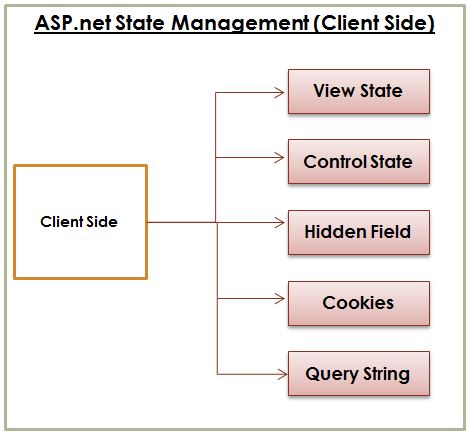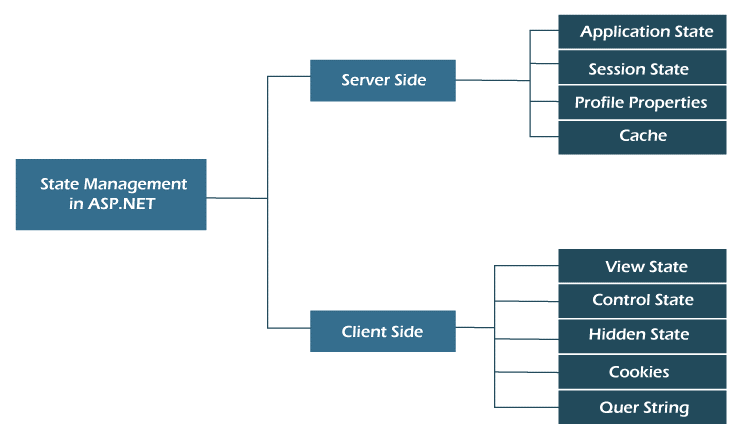Implementing State Management In Web Applications

State management is an essential aspect of web development. It allows web applications to maintain and store data over time, enabling users to interact with the application seamlessly. Several approaches to implementing state management in web applications exist, each with its own advantages and disadvantages.

Session Management:

Session management is a server-side technique where data is stored on the server and linked to a unique user session. This approach is suitable when data needs to be persisted for a limited duration, typically the length of a user’s session. However, data is lost when the session expires or the server restarts.
Local Storage:
Local storage is a client-side mechanism that allows data to be stored on the user’s browser. It is persistent and survives browser restarts, making it ideal for storing data that needs to be preserved across sessions. However, local storage has limitations on storage size and can be accessed by malicious scripts.
Cookies:
Cookies are small text files stored on the user’s browser. They are sent back to the server with each subsequent request, allowing them to maintain state across requests. Cookies are well-supported and widely used, but they are limited in size and can be blocked by privacy settings.
Redux:
Redux is a state management framework that follows a unidirectional data flow architecture. It provides a central store where application state is managed as immutable objects. Redux actions trigger state transitions, ensuring predictability and testability. However, Redux can be complex to implement, especially for large-scale applications.
MobX:
MobX is a reactive state management library that uses observable data structures. When data changes, MobX automatically updates the related components, providing a reactive programming experience. MobX is relatively easy to learn and implement, but it can introduce performance overhead for complex applications.
Choosing the Right Technique:
The choice of state management technique depends on the specific requirements of the application. Session management is suitable for short-term storage, while local storage and cookies are best for persistent data. Redux and MobX are powerful options for managing large amounts of application state, but they require more effort to implement.## Implementing State Management In Web Applications
Executive Summary
State management is a crucial aspect of modern web applications, ensuring that data remains consistent and accessible throughout the application’s lifecycle. This article delves into the key concepts of state management, exploring various techniques and their benefits. By understanding state management, developers can create robust and performant web applications that deliver a seamless user experience.
Introduction
State management in web applications refers to the practice of managing the data and information that determines the application’s behavior and appearance. Effective state management ensures that data is stored and retrieved efficiently, enabling the application to respond to user interactions and maintain a consistent state even after page reloads or component updates.
Key State Management Concepts
1. Single Source of Truth (SSOT)
- Establishes a centralized location where all application state is stored and managed.
- Eliminates data inconsistencies and ensures that all components access the same up-to-date data.
- Improves application maintainability by reducing the risk of data conflicts.
2. Redux
- A popular state management library for JavaScript applications.
- Implements a unidirectional data flow architecture, ensuring predictability and consistency.
- Provides built-in actions and reducers for managing state updates.
3. MobX
- An observable state management library that automatically tracks state changes.
- Offers a reactive programming model, enabling components to automatically react to state updates.
- Simplifies state management by reducing the need for manual state updates.
4. Context API
- A built-in React API that allows components to access global state without having to pass props through multiple levels of the application.
- Provides a centralized mechanism for managing data that needs to be shared across multiple components.
- Simplifies state management by reducing the need for complex prop drilling.
5. Zustand
- A modern state management library that combines the benefits of Redux and MobX.
- Simplifies state management by providing an easy-to-use API and built-in persistence capabilities.
- Offers a flexible and scalable solution for managing state in complex applications.
Conclusion
Effective state management is essential for building robust and responsive web applications. By understanding the key concepts and selecting the appropriate state management techniques, developers can optimize their applications for performance, maintainability, and user experience. Whether using Redux, MobX, Context API, or Zustand, implementing a sound state management strategy will enhance the overall quality and functionality of any web application.
Keyword Phrase Tags
- State Management
- Single Source of Truth
- Redux
- MobX
- Context API


Good post! I found it very informative and helpful. I’m new to state management in web applications, and this post has given me a good understanding of the concepts involved.
This post is a waste of time. The author doesn’t provide any useful information and just rambles on about stuff that I don’t care about.
I’ve been working with state management in web applications for a few years now, and I can tell you that this post is spot-on. The author does a great job of explaining the different concepts involved in a clear and concise way.
I disagree with the author’s assertion that Redux is the best state management solution for web applications. I think that there are other solutions that are more flexible and easier to use.
Ironic that a post about state management in web applications is so poorly written. The author’s use of grammar and punctuation is atrocious.
Sarcasticly, this post is a great example of how not to write about state management in web applications. The author’s lack of knowledge on the subject is evident in every sentence.
Comicaly, this post is like a bad sitcom episode. The author tries to be funny, but fails miserably.
I’m so glad I found this post! I’ve been struggling to understand state management in web applications, and this post has finally made it click for me.
This post is terrible. The author doesn’t know what they’re talking about and the writing is full of errors.
I’ve been working with state management in web applications for a few years now, and I can tell you that this post is spot-on. The author does a great job of explaining the different concepts involved in a clear and concise way. Well done!
I disagree with the author’s assertion that Redux is the best state management solution for web applications. I think that there are other solutions that are more flexible and easier to use, however i understand that for some projects Redux is a good choice.
Ironic that a post about state management in web applications is so poorly written. The author’s use of grammar and punctuation is atrocious, never forget to proofread your post before publish it!
Sarcasticly, this post is a great example of how not to write about state management in web applications. The author’s lack of knowledge on the subject is evident in every sentence, please take some time to research before write again.
Comicaly, this post is like a bad sitcom episode. The author tries to be funny, but fails miserably. Hey at least you tried!